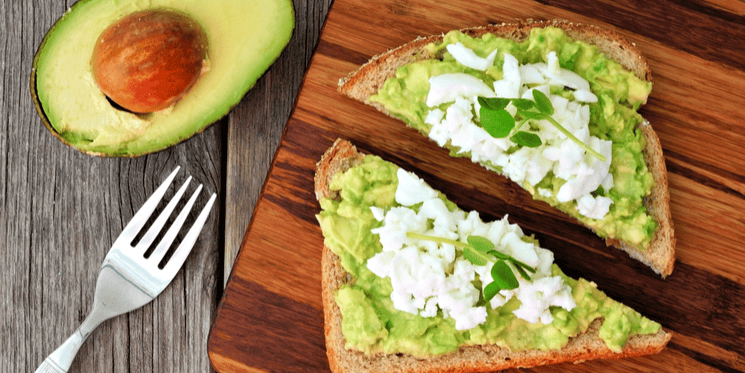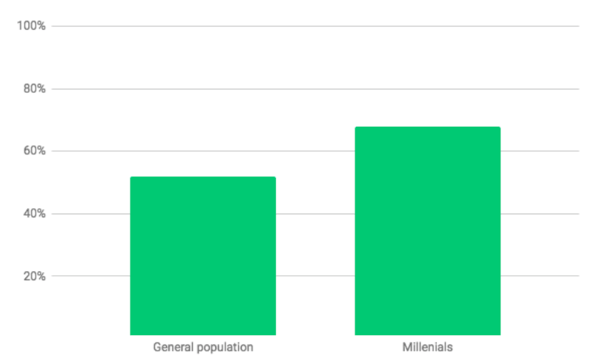
Millennials have overtaken baby boomers as the most dominant generation in the workforce.
And more importantly, they now make up 45% of B2B buyers.
The top end of this cohort - now approaching their mid-30s, are set to be our biggest allies as they move into managerial roles and acquire more purchasing and decision-making power.
Thankfully, inbound marketing is conducive to how they operate instinctively in everyday life. They interact with search engines and social media daily, they trust influencers more than they trust their friends, and they are voracious researchers.
But we’re grappling with a crisis of attention - undoubtedly fuelled by overstimulation and a dependence on tech.
As a result, the typical millennial is easily distracted and has an insatiable appetite for relevant media, served with a generous side of instant gratification.
As content marketers, we need to adapt to satisfy the millennial palette. This might all sound like hard work; how do we appeal to the most unfocused, unsatisfied, and distracted generation yet? The truth is you probably already are, but it pays to be aware of what is and isn't working.
After much research, I've compiled a list of reasons you might want to continue investing in content-driven media. Or tweak your existing strategy for greater impact.
They will do the influencing for you
Content-driven media strategies can take advantage of influencer outreach, UGC (User-generated content), and peer reviews to garner credibility. 84% of millennials say user-generated content had some influence on what they buy.
Millennials appreciate leadership, expertise, and influencers, and as Digital Agency Network have discovered, these techniques can give you a 45% greater chance of appealing to them rather than communicating your product by simply stating facts. Thought-leadership and authority are the backbones of inbound and content marketing.
Conversely, when millennials have a positive experience with a product or service, they’re more likely to not just buy your product, but also to act as a referral, write a review, or otherwise advocate to the next buyer who is considering your product.
They get ‘FOMO’ (and here’s how to take advantage of that!)
‘FOMO’ - a term coined in 2004 to describe the ‘Fear of missing out’ is an inevitability in a constantly connected generation. Not only does this cause millennials to be 'always on', but it means they’re always in tune with the ‘next big thing’. Using a content-driven media strategy, underpinned by a sense of urgency and social proof, you can capitalise on this ‘fear’.
Using language such as ‘Unmissable’, ‘Join others’, and ‘Trending now’ within your microcopy can induce ‘FOMO’. Think about this when writing CTA (Call-to-action) buttons, email subject lines, and other forms of conversion copy.
They’re ‘always-on’
Millennials are almost always on social media. The average millennial checks their phone 150 times a day. Whether that’s looking at Twitter, Linkedin, Instagram or Facebook intermittently throughout the day, or posting photos of their avocado on toast to Instagram, the need to stay constantly connected and see their messages and notification stems from a release of dopamine in the brain.
Being at the right place at the right time is where you're more likely to be seen, acknowledged, and clicked on. Positioning your content, promoting your brand, and demonstrating brand benevolence across social platforms is a great route to take if you want to enhance your reputation in the eyes of the millennial.
B2C brands are already capitalising on this trend, and have even coined millennials ‘omni-shoppers’, noting their blend of the offline and online world. “They don’t even go online, they already are...they’re always online”.
A good content strategy understands how to best target audiences across each social platform. Arbitrary and irrelevant messaging will be lost in abundant feeds of brands and influencers battling for attention.
Remember that the entire premise of social media is instantaneous and live communication. This is what millennials are accustomed to and what they have come to expect from brands.
Can you deliver an 'always-on' experience?
They crave the ‘buyer’s journey’
Millennials enjoy and even crave the entire experience of buying - more than buying itself. This is what’s known as ‘fauxsumerism’. Ultimately, they just want to have fun and be entertained throughout this process. If your strategy is delivering engaging content, encompassing all formats and addressing all preferences of content consumption, you’ll have an advantage over competitors who are playing it safe.
Are you experimenting with different media? Content doesn’t just have to be written. And we are becoming more and more familiar with that concept. Informative and valuable content comes in the form of infographics, blogs, eBooks, organic research, videos, podcasts, and more.
Above all, make it fun, shareable and relatable.
As Hubspot aptly puts it: “When you offer your audience content they would proudly share with others, you’re building a real brand-consumer relationship.”
They ask questions
When millennials want answers, they’re heading straight to search engines. More so than any other member of the general population.
Just look at the results of a survey conducted by Search Engine Land, which found that 68% of millennials conduct nearly all of their daily searches on their mobile devices. And 62% conduct at least 5 searches a day.

Image source: Search Engine Land
As I mentioned earlier, millennials are voracious researchers and they value their personal research over anything else. They will take initiative and look for solutions to their problems that they can implement themselves. But they recognise the abundance of mediocre content online and will seek out brands that they can trust.
They value authenticity
Pricing isn't a priority for millennials. While it matters to some extent, one of the main drivers in their buying decisions is authenticity. They aren't enticed by traditional advertising like their counterparts. In fact, 84% of them dislike advertising altogether.
Authenticity is not only achieved by providing helpful, relevant and transparent content, but by demonstrating philanthropy, benevolence, and social responsibility. Millennials are more likely to do business with brands that are aligned with their own values, and as keen environmentalists, you won't be surprised to find out that they're willing to pay more for a product or service if it supports the environment.
An inherent digital fluency has seen millennials become the most experienced, savvy, and competent buyers yet, and as a result, the biggest marketing disruptors. Appealing to them doesn't call for a complete overhaul of your strategy. If you’re following any kind of inbound or content marketing strategy you’ll already be well on your way. What it comes down to is understanding them as consumers, their values, their behaviours, and how they interact with the entire buyer's journey.



